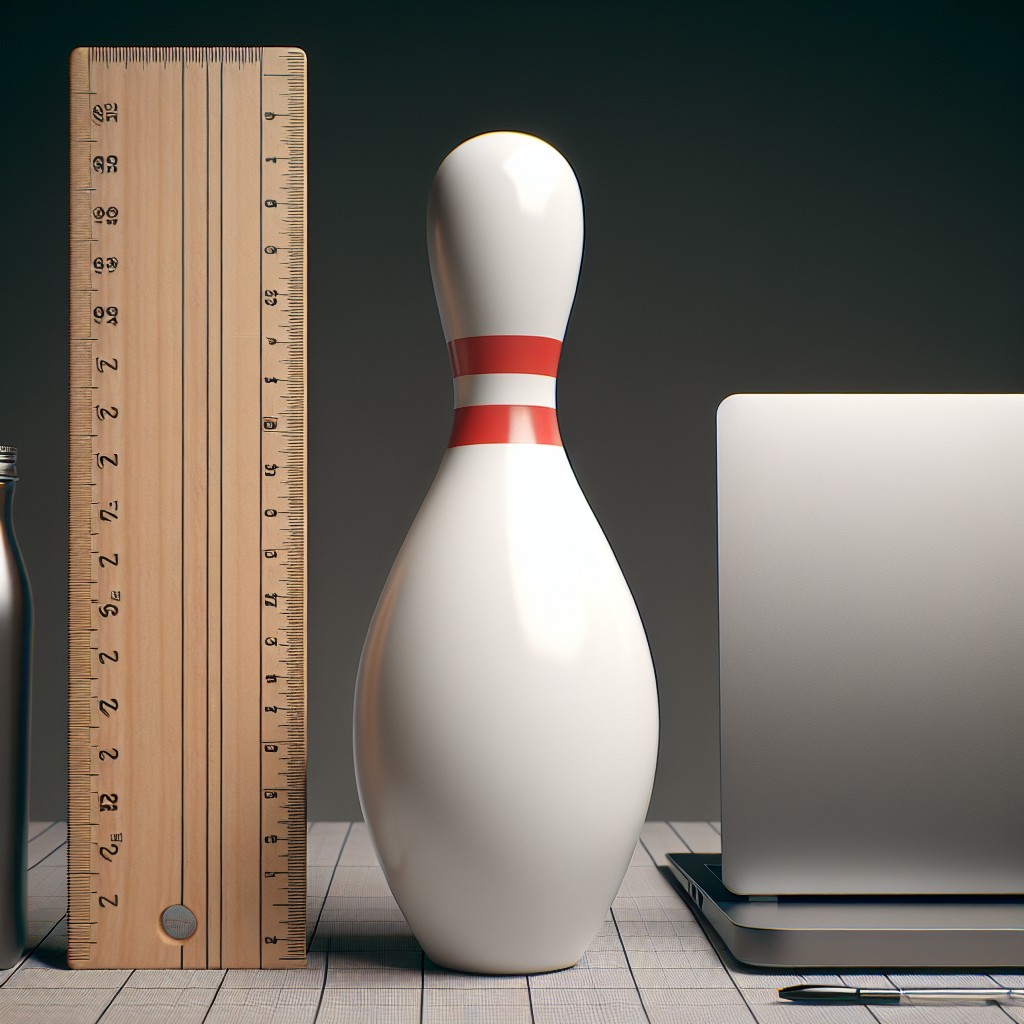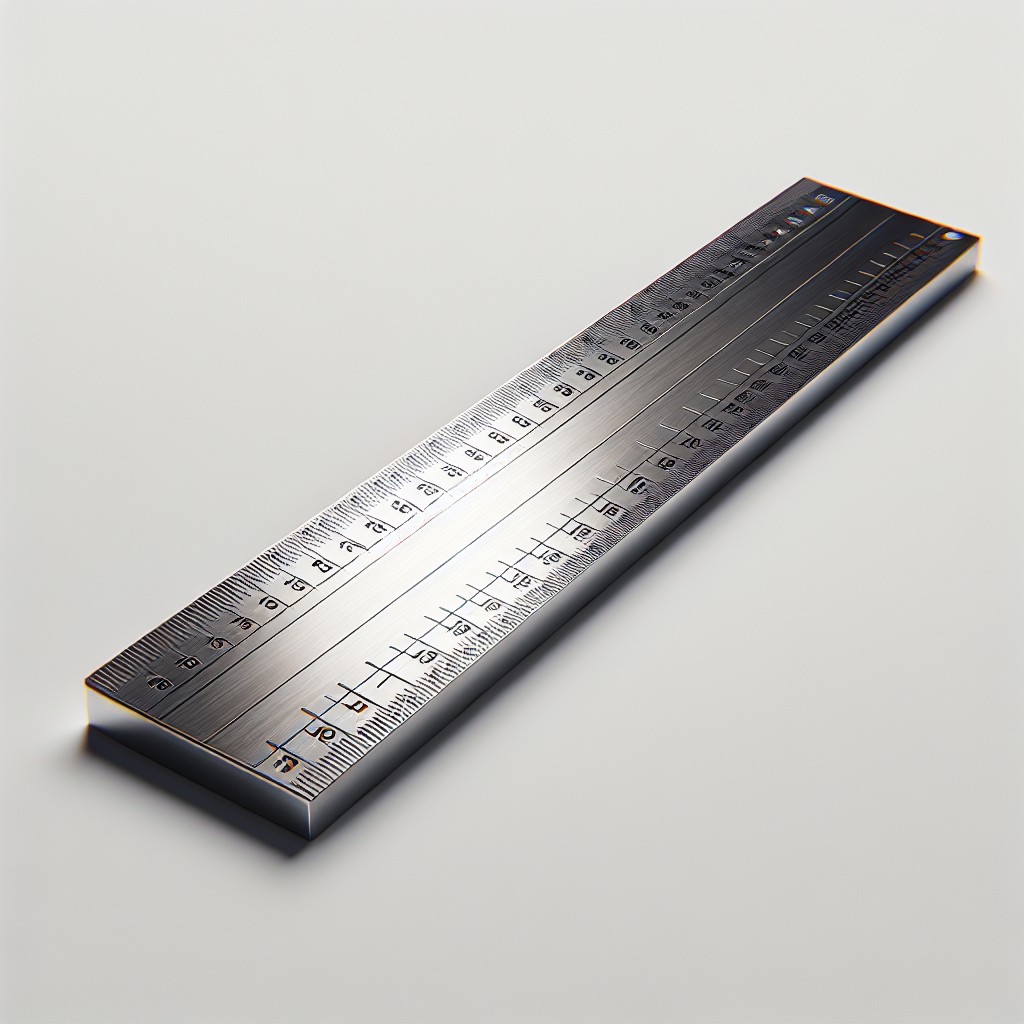Last updated on
Unravel the magnitude of 14 inches as you navigate through this article, offering benchmarks, tangible visuals, and everyday objects for comparison in a bid to give you a clear perspective of its real-world equivalence.
Key takeaways:
- 14 inches is equivalent to a standard legal-size document.
- A 14-inch laptop screen provides a balance between portability and functionality.
- 14 inches is a common size for decorative vases and table lamps.
- Artists often use canvases with a 14-inch dimension for paintings.
- 14 inches is a common size for yoga mats in the fitness industry.
What's Inside
Common Objects Compared to 14 Inches

To grasp a tangible sense of how long 14 inches is, picture a standard 12-inch ruler with an extra 2-inch stretch. Now, envision these everyday items:
- A standard legal-size document, which measures 8.5 by 14 inches, extends its full length.
- Laptop screens labeled as 14 inches diagonally reflect this measurement, giving a feel for tech sizing.
- Tall paperback books, often ranging between 12 and 14 inches in height, provide a visual cue.
- Vinyl records, slightly larger than their 12-inch diameter, continue to be popular items for comparison.
- Sub sandwiches, many offered in a 12-inch size, with an additional 2-inch extension, can mimic the length.
By using these common items, the 14-inch measurement becomes easier to visualize and apply to real-world scenarios.
Visual Representation of 14 Inches

Imagine a standard ruler, which typically measures 12 inches long. Add another two inches, slightly less than the width of a golf ball, and you’ve got the visual representation of 14 inches. That’s roughly the length of a large forearm or the height of a three-month-old baby lying down.
To make this more tangible, consider a notebook’s length, often around 11 to 12 inches. Stack two pencils end to end beyond that point, and you’ve bridged the gap to 14 inches. Alternately, look at the distance from the base of an adult’s palm to the fingertips – it’s close to this measurement for many.
In a pinch, use currency: a U.S. dollar bill is just over 6 inches long, so lay two end-to-end with a little extra space, and you’ve sketched out the size we’re discussing without a measuring tape. These everyday comparisons turn an abstract number into something you can see and understand with ease.
Everyday Uses of 14-inch Measurements
A 14-inch dimension might seem random, but it’s far from it. In everyday life, it surfaces in various ordinary items and scenarios.
Take, for example, a 14-inch pizza — a family favorite that illustrates the diameter often found in larger, shareable pizzas. It’s not just food; many computer monitors and laptop screens boast this diagonal measurement, making it a common sight in offices and homes.
In the realm of home decor, a 14-inch height or width is a favored size for decorative vases and table lamps, balancing visibility and space conservation. If you’re a gardening enthusiast, you might find this measurement marking the width of hanging planters, providing ample room for blooms to flourish without overwhelming your patio.
Artists often use canvases with this dimension on one side, offering a decently sized surface for paintings that can fit in most galleries and living rooms with ease. For the do-it-yourself crowd, understanding the 14-inch size is handy when cutting wood for a bookshelf; not too bulky, yet sufficient for a row of novels.
Lastly, in the realm of fitness, 14 inches is a common width for yoga mats, ensuring they’re compact enough to carry comfortably yet provide enough space to practice a full range of poses. Each example, in its way, showcases the real-world applications of this seemingly specific but remarkably prevalent measurement.
Understanding Inches and Centimeters
The inch and the centimeter are units of length within different measurement systems; the former is used in the imperial system, and the latter in the metric. One inch is officially defined as exactly 2.54 centimeters. Therefore, understanding the relation between these two units is essential for converting measurements.
- To visualize an inch, imagine the width of a standard U.S. dime or the distance from the top of your thumb to your first thumb joint.
- A centimeter is roughly the width of a large paperclip or the diameter of a AAA battery.
- When comparing the two, a 12-inch ruler is approximately the same length as 30 centimeters on a metric ruler.
- Knowing this conversion factor, 14 inches is equivalent to 14 times 2.54, which totals 35.56 centimeters.
By keeping these visual aids and conversion factors in mind, transitioning between inches and centimeters becomes intuitive, allowing for quick and efficient size estimations in everyday situations.
Converting 14 Inches to Other Units of Measurement
Mastering the art of conversion is like having a superpower in measurement circles. With a 14-inch length as our starting point, let’s translate that into various units to see how it stacks up:
- Feet: Since there are 12 inches in a foot, 14 inches is equivalent to 1 foot and 2 inches. This helps when you’re eyeing furniture or estimating room sizes.
- Centimeters: To switch to the metric system, multiply inches by 2.54. Therefore 14 inches would be 35.56 centimeters, valuable for those who prefer metric or need to align with international standards.
- Meters: As 100 centimeters make up a meter, those 35.56 centimeters from before convert to 0.3556 meters, a useful conversion for understanding small-scale construction projects or scientific experiments.
- Millimeters: Taking centimeters one step smaller, we use 10 millimeters to make up a centimeter; thus 14 inches becomes 355.6 millimeters, great for precision tasks like sewing or engineering.
Knowing these conversions can empower you in tasks ranging from shopping for the right-sized frame to comprehending technical specifications that often switch between units. Keep these conversions handy, and you’ll navigate between systems with ease.
The Significance of 14 Inches in Various Contexts
In the world of retail, especially when it comes to screen sizes for electronics, 14 inches signifies a medium-sized device, offering a balance between portability and functionality. This size is especially popular among laptops, where a 14-inch screen is considered ideal for users who need a decent display that’s still convenient for travel.
In the realm of home decor and construction, this measurement is regularly encountered. For example, the standard dimension of many wall clocks falls within this range. Understanding 14 inches allows better spatial planning when hanging art or installing shelves, ensuring that everything fits harmoniously within a given space.
For baking enthusiasts, a 14-inch cake stand might be a staple. It represents a size large enough to accommodate a generous party cake without being unwieldy or excessively bulky.
In clothing, 14 inches might refer to the inseam of shorts, defining a specific length that falls at the thigh for most people. Recognizing this measurement helps when selecting apparel or guiding a tailor for a custom fit.
In automotive care, particularly in the domain of tires, 14 inches can refer to rim size. For many compact cars, this size corresponds to the diameter of the wheel, crucial for selecting the right tires for a smooth and safe ride.
In each of these scenarios, the measure of 14 inches is woven subtly into decision-making processes across diverse activities, marking its relevance beyond mere numbers on a ruler.
DIY Projects: Utilizing a 14-inch Length
Embarking on a DIY project offers the perfect opportunity to leverage the practicality of a 14-inch measurement. For instance, when building shelving, this length can serve as a standard depth for bookshelves, ensuring they’re large enough for most books without protruding too much into the room.
In crafting, creating fabric squares of this size can be the base for cushion covers or patchwork quilts, providing ample space for designs, yet manageable for sewing machines.
For garden enthusiasts, using the measurement to space out plant pots ensures each has adequate room to thrive, balancing aesthetic with plant health.
Meanwhile, in a more structural context, this measurement is fitting for cross-supports in a medium-sized wooden frame or for the spacing of hooks on a homemade coat rack, yielding function and style in equal measure.
By sticking to a specific length like 14 inches in your DIY endeavors, not only can you maintain consistency across projects, but you can also create items that are inherently functional due to their tailored sizing.
Medium-Sized Pan Pizza
When you order a medium-sized pan pizza, you’re typically getting a pie with a 14-inch diameter. This size is a popular choice for group meals, comfortably serving about three to four people.
The surface area of a 14-inch pizza is about 154 square inches, which allows for plenty of topping-loaded slices. To visualize it, think of two standard 7-inch vinyl records placed side by side or slightly less than the length of a standard ruler plus a half.
While size can be subjective in some restaurants, a pan with these dimensions is commonplace in many pizza chains and a go-to for family dinners or small gatherings, thus demonstrating a practical application of the 14-inch measurement in the culinary world.
Inch Laptop Dimensions (standard)
When contemplating the size of a 14-inch laptop, it’s crucial to note that this measurement refers to the diagonal length of the screen, not the width or height of the device. This standard comes from the way televisions and monitors are traditionally measured. Specifically, for a 14-inch laptop screen, the dimensions from the bottom left to the top right corner—or vice versa—will span 14 inches.
With the diagonal measurement in mind, the actual width and height can vary depending on the aspect ratio, which is the proportional relationship between the screen’s width and height. Most laptops come with an aspect ratio of 16:9. Consequently, a 14-inch laptop would typically have a screen width of approximately 12.2 inches (31 cm) and a height of about 6.9 inches (17.5 cm).
It’s also beneficial to acknowledge that these dimensions only represent the screen itself. The laptop’s overall size will be slightly larger due to the bezel or frame that surrounds the screen, plus any additional chassis space for hardware, keyboard, and trackpad. Understanding these measurements can be particularly helpful when considering the portability of the laptop, as well as the size of the bag or case you might need for transportation.
How Big Is a 14 Inch Laptop in Cm?
A 14-inch laptop screen, measured diagonally from corner to corner, translates to 35.56 centimeters. This size is just right for balance between portability and visual comfort, fitting snugly into backpacks and satchels designed for day-to-day use.
Interestingly, when you’re examining laptop sizes, the 14-inch measurement only refers to the screen, not the device’s full dimensions which will include the bezel and casing around the screen. Hence, actual laptop dimensions might be a couple of centimeters larger.
In context, a standard A4 sheet of paper is 29.7 cm in length, which means a 14-inch laptop screen is slightly longer than a sheet of A4 paper. For those into interior design, this screen size is also about the length of a standard pillow, giving a familiar reference to imagine the size on a desk or in your workspace.
By understanding this conversion, it becomes easier to envision the size of tech products and make informed choices relevant to your needs, whether that’s fitting into a certain space on your work desk or ensuring the device won’t be too bulky for travel.
FAQ
How big is 14 inches pizza?
A 14-inch pizza, regarded as a large size option, possesses a diameter of 14 inches, or roughly 35.56 cm, and presents a total surface area around 154.54 square inches.
Is 14-inch too small?
No, a 14-inch measure is not too small, rather it is an excellent size offering portability for travel and adequacy for desk use, appealing to those who deem 13-inch as too small and 15-inch as excessively large.
How does a 14-inch laptop screen compare to other common sizes?
A 14-inch laptop screen, measured diagonally, provides a balanced middle-ground between portability and functionality compared to smaller 11-inch netbooks and larger 17-inch gaming laptops.
In terms of art portraits, what can be effectively portrayed on a 14-inch canvas?
A 14-inch canvas is a suitable platform for detailed depictions of individual faces as well as small still life compositions due to its compact size.
What is the scope of interior decor one can consider with a 14-inch wall clock?
A 14-inch wall clock can add a focal point to your interior decor if paired with right elements like color-coordinated artwork or photographs, matching wall color or wallpaper, put above a fireplace or over a console table, or surrounded by small decorative items like mirrors or plants.




